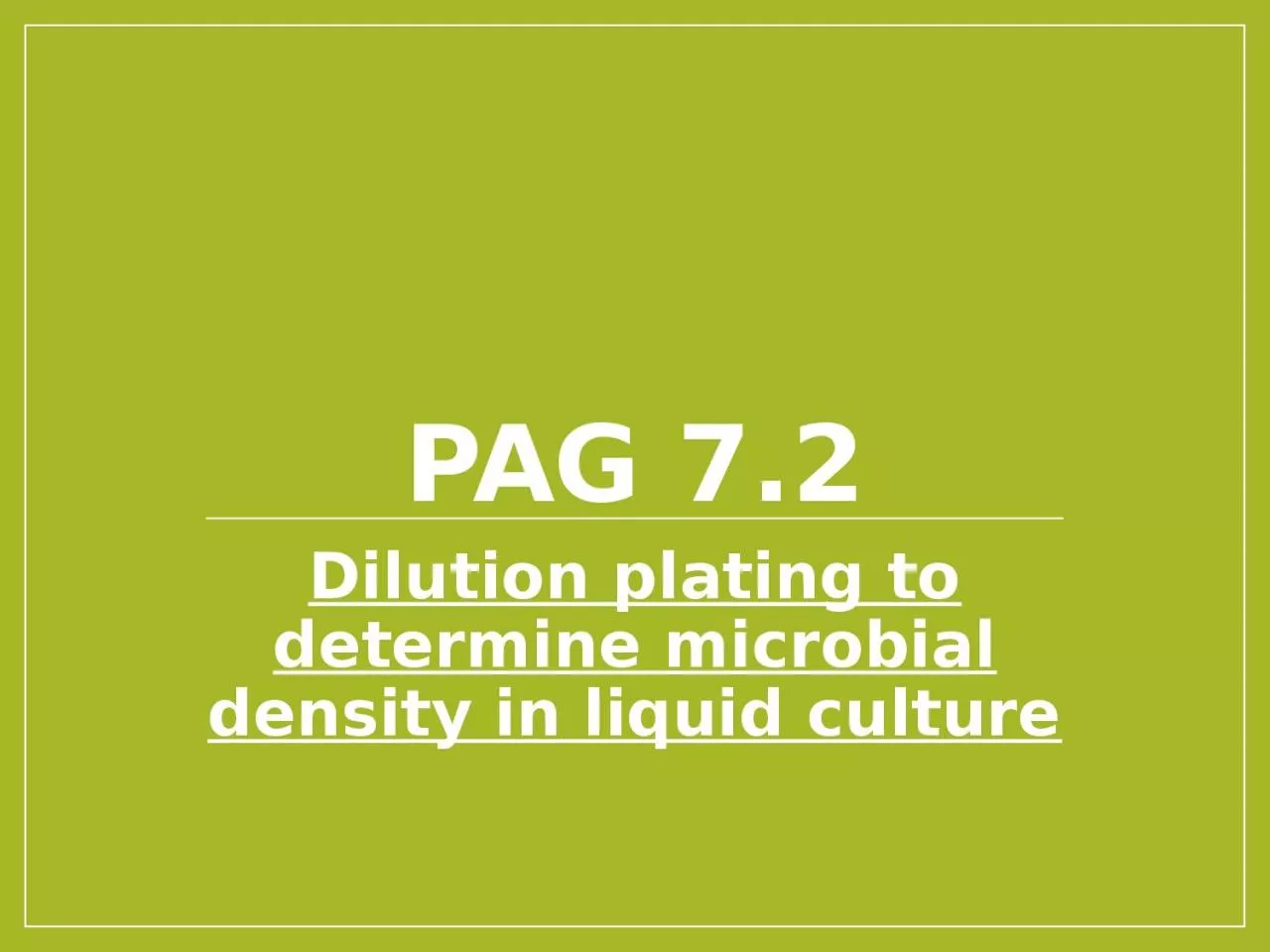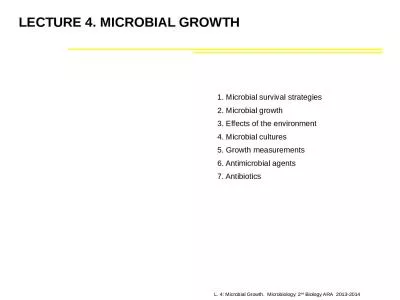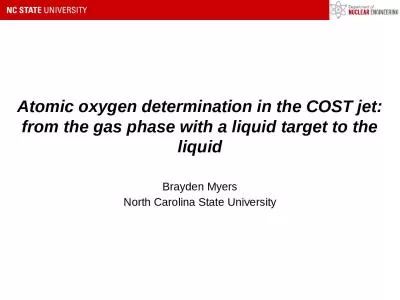PPT-PAG 7.2 Dilution plating to determine microbial density in liquid culture
Author : madeline | Published Date : 2024-01-03
Dilution plating to determine microbial density in liquid culture Aim To find the density of viable bacterial cells in two cultures of Bacillus subtilis by dilution
Presentation Embed Code
Download Presentation
Download Presentation The PPT/PDF document "PAG 7.2 Dilution plating to determine mi..." is the property of its rightful owner. Permission is granted to download and print the materials on this website for personal, non-commercial use only, and to display it on your personal computer provided you do not modify the materials and that you retain all copyright notices contained in the materials. By downloading content from our website, you accept the terms of this agreement.
PAG 7.2 Dilution plating to determine microbial density in liquid culture: Transcript
Download Rules Of Document
"PAG 7.2 Dilution plating to determine microbial density in liquid culture"The content belongs to its owner. You may download and print it for personal use, without modification, and keep all copyright notices. By downloading, you agree to these terms.
Related Documents














